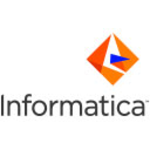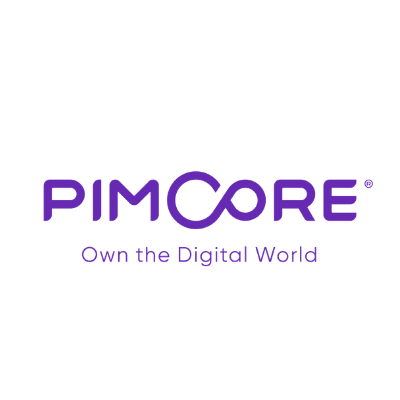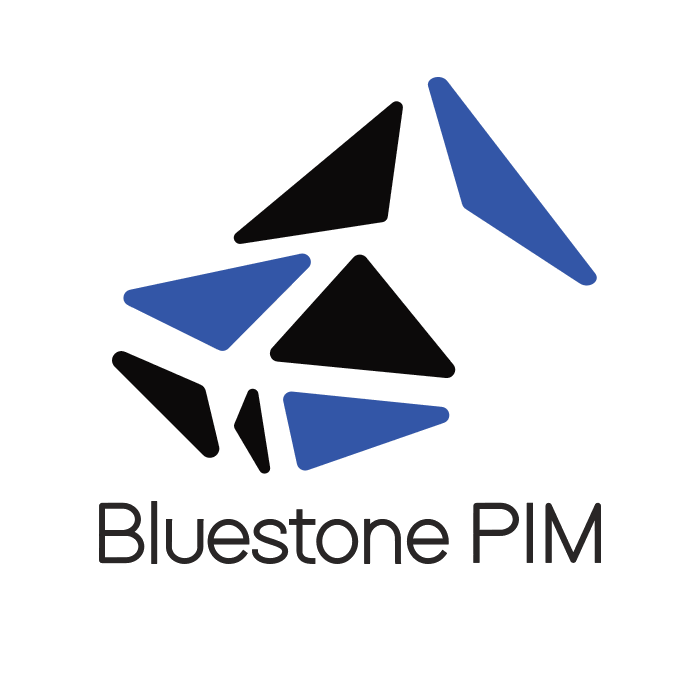Yes, most PIM software supports many devices and platforms, allowing customers to manage their product information from anywhere. This encompasses desktop computers, laptops, tablets, and smartphones running various operating systems such as Windows, Mac, iOS, and Android. However, before purchase, make sure the program is compatible with your devices and platforms to enable seamless access and usage.
List of 20 Best PIM Software
Riversand, now part of Syndigo, offers industry-leading MDM and PIM solutions that simplify data operations for businesses. Our advanced technology helps companies worldwide optimize e-commerce and customer experiences. With the recent acquisition by...Read More Riversand
AtroPIM is a software designed to meet the unique needs of businesses of all sizes. With its customizable data models, interfaces, and affordable pricing, it offers a flexible solution for your organization. Its modular design allows for seamless int...Read More AtroPIM
Informatica MDM is master data management software that ensures the integrity and consistency of data across your organization. Through its advanced features, it helps organizations establish a comprehensive and unified view of their data, leading to...Read More Informatica MDM
Pimcore is a leading open source CMS and user experience management solution designed for enterprises. Its unmatched versatility enables seamless integration of content and commerce, while empowering businesses to effortlessly create, manage, and del...Read More Pimcore
AtroCore is a data platform designed to meet the needs of any business. Its unique customization options and strong connectivity make it stand out from the competition. This incredibly affordable solution offers modular choices that can be utilized a...Read More AtroCore
PIMinto - the budget-friendly tool that simplifies your product management tasks. Our solution enables your team to efficiently gather, categorize, enhance, and distribute your product catalog on all sales and eCommerce channels, all from a single, c...Read More PIMinto
Unbxd PIM is a product information management solution driven by AI. Simplify the process of gathering, categorizing, and storing product data with our centralized console. Seamlessly manage, edit, and maintain all your product information for enhanc...Read More Unbxd
Directus is an innovative backend solution that empowers developers to effortlessly create custom APIs. With its modular toolkit and real-time data functionalities, project deployment is streamlined, making it the perfect choice for teams seeking eff...Read More Directus
Surefront is product collaboration platform that streamlines omni-channel sales, merchandising, and product development. By combining PIM, CRM, and PLM solutions, Surefront enhances productivity and drives business growth. With our innovative tools,...Read More Surefront
Cobby is a PIM system that takes the hassle out of managing your online stores product data. With Cobby, you can effortlessly integrate your data with Excel and seamlessly sync it to Magento or Shopware in real-time. Say goodbye to manual updates and...Read More cobby
Apimio - your ultimate tool for easy management of product data. Effortlessly onboard and enhance customer experiences with our user-friendly features. Bid farewell to tedious tasks and frustration, as our software simplifies multi-store operations...Read More Apimio
Delogue PLM is a cloud-based solution, catered to the fashion, eyewear, interior, jewelry, and lifestyle sectors. It offers a comprehensive platform to effortlessly manage product data and development processes. This user-friendly software optimizes...Read More Delogue PLM
Bluestone PIM - a rapidly-growing Nordic tech organization making a global impact. Established in 2015, our goal is to provide a multi-tenant SaaS solution for Product Information Management. Our game-changing platform, Bluestone PIM, is transforming...Read More Bluestone PIM
skyPIM, the ideal PIM solution for businesses seeking rapid implementation and seamless integration with their ERP systems. Our platform boasts intuitive interfaces and pre-configured options, making digital transformation a breeze and delivering a s...Read More skyPIM
Upp is ainnovative, AI-driven software designed to cater to the specific advertising requirements of retail businesses. Utilizing its advanced capabilities, Upp optimizes ad spend, enhances product visibility, and utilizes extensive data analysis to...Read More Upp
Perfion PIM - a product information management solution that streamlines the handling and consolidation of your product data. Boost efficiency, ensure data accuracy, and seamlessly integrate with ease using its robust capabilities. Empower your busin...Read More Perfion PIM
Syndigo is a robust cloud-based platform ideal for businesses to effectively handle and improve their product content and data. Trusted by well-known brands, Syndigo offers comprehensive solutions such as data governance, content delivery, and perfor...Read More Syndigo
Catsy is solution for managing all your product information and digital assets in one convenient platform. This powerful PIM and DAM tool simplifies eCommerce operations by ensuring precise and effective distribution across all your sales channels. N...Read More Catsy
Brandquad - the complete product content management solution for manufacturers, retailers, and distributors. Our powerful suite enables you to effortlessly create, enhance, and manage top-quality content, including PIM and DAM systems, eCommerce inte...Read More Brandquad
Learn More About PIM Software
- What Is PIM Software?
- What Are The Recent Trends In PIM Software?
- Benefits Of Using PIM Software
- Important Factors To Consider While Purchasing PIM Software?
- What Are The Key Features To Look For In PIM Software?
- Why Do Businesses Need PIM Software?
- How Much Time Is Required To Implement PIM Software?
- What Is The Level Of Customization Available In PIM Software?
- Which Industries Can Benefit The Most From PIM Software?
- Conclusion
What Is PIM Software?
PIM (Product Information Management) software is a specialized solution that helps firms manage their product data more efficiently and effectively. It is the principal repository for all product information, including descriptions, photos, pricing, and technical specs. PIM software simplifies and automates the entire process of gathering, organizing, and disseminating product data, making it an indispensable tool for firms trying to improve their product information management skills.
One of the primary characteristics of PIM software is its ability to interact with a variety of systems and channels, including eCommerce platforms, marketplaces, and ERP systems. This enables firms to effortlessly maintain consistent and correct product information across all of their sales channels, minimizing the need for human updates and lowering the likelihood of data errors.
PIM software also provides comprehensive data modeling capabilities, allowing firms to structure and categorize product information in a meaningful and relevant manner to their target audience. This makes it easier for shoppers to find and compare products, resulting in a more enjoyable and convenient purchasing experience.
Furthermore, PIM software provides powerful workflow and collaboration capabilities, allowing teams to collaborate on product information, manage changes, and assure data integrity and consistency. This is especially valuable for firms that have many departments or teams in charge of managing product data. Furthermore, PIM software frequently includes analytics and reporting tools, providing firms with vital insights into how their products are doing across several channels.
This enables them to make data-driven decisions and improve their product information strategies to get greater results. Overall, PIM software is a crucial tool for firms that want to improve their product information management, optimize their processes, and improve the customer experience. With its numerous features and integration capabilities, PIM software is an excellent investment for any company trying to stay competitive in today's market.
What Are The Recent Trends In PIM Software?
In recent years, Product Information Management (PIM) software has undergone substantial development and enhancement to meet the ever-changing demands of modern enterprises. As the requirement for efficient and precise product data management grows, PIM software has evolved to match these expectations, resulting in several critical trends that buyers should be aware of when making purchasing decisions.
Let's look at some of the most recent PIM software trends that consumers should be aware of.
1. Cloud-Based PIM: Software is becoming increasingly popular. With the growing popularity of cloud solutions, demand for cloud-based PIM software has increased dramatically. This trend is motivated by a need for flexibility, scalability, and cost-effectiveness. Cloud-based PIM software enables firms to access product data from anywhere and at any time, making collaboration and synchronization between teams and departments much easier.
2. Artificial Intelligence And Automation Are Changing PIM Software: Artificial intelligence (AI) and automation have become essential components of PIM software, helping to expedite procedures and enhance data accuracy. AI-powered data cleansing and enrichment skills can reduce human error and save time, whereas automation can handle repetitive operations, allowing people to focus on more important duties.
3. Integration With Other Systems Is Critical: With the growing volume of data that businesses must handle, connecting PIM software with other systems, such as ERP and e-commerce platforms, has become critical. This interface enables smooth data transmission, ensuring that product information is consistently correct and up to date across all systems.
4. Mobile Compatibility Is An Essential: Mobile compatibility has become a prerequisite for PIM applications. With employees working remotely and accessing product data on the go, the ability to access PIM software via mobile devices is critical. Buyers should look into options that are mobile compatible for increased efficiency and productivity.
5. Personalization Is Becoming Increasingly Crucial: As consumers' need for tailored shopping experiences grows, firms must be able to manage and deliver unique product information. Businesses can match this demand by using PIM software that includes personalization features such as focused search and product suggestions.
6. The shift To Omnichannel: Data management In today's digital landscape, firms must have a presence on various platforms, and maintaining product data in silos is no longer sufficient. PIM software that enables omnichannel data management, assuring consistent and accurate product information across all channels, is gaining popularity.
Benefits Of Using PIM Software
PIM software, or Product Information Management software, is a useful tool for firms that want to properly manage and organize their product data. In today's fast changing digital landscape, a dependable and comprehensive PIM system can provide numerous benefits to any firm.
Let's explore, we'll look at the main benefits of utilizing PIM software and explain why it's a good investment for your organization.
1. Centralized Product Data Management: One of the primary benefits of using PIM software is that it creates a single database for all of your product information. This implies that all of your data, including descriptions, photos, price, and specs, can be saved in one location, making it easily available to authorized users. This reduces the need to handle various spreadsheets or databases, saving time and lowering the likelihood of error.
2. Improved Data Quality: PIM software includes data validation and cleansing features that can improve the accuracy and quality of your product information. It ensures that the data is consistent, up to date, and error-free, resulting in a seamless client experience. This not only enhances consumer pleasure, but it also increases brand credibility and lowers the likelihood of returns and complaints.
3. Time And Cost Savings: PIM software enables firms to optimize their product management procedures, resulting in considerable time and cost savings. Instead of spending hours manually updating and distributing product information across several channels, PIM software automates these operations, allowing staff to focus on other vital responsibilities. This minimizes the need for costly resources and enables organizations to scale their product management efforts without incurring additional costs.
4. Improved Efficiency: PIM software works with a variety of e-commerce platforms, marketplaces, and other business systems, making it easier to manage and syndicate product information across different channels. This not only maintains consistency in product data, but it also boosts efficiency by reducing redundant operations. As a result, firms can swiftly introduce new goods, update information in real time, and successfully manage their omnichannel strategy.
5. Improved Product Experience: PIM software allows organizations to provide accurate and consistent product information to customers, regardless of the channel they use. This leads in a more smooth and personalized buying experience, which boosts customer happiness and loyalty. Businesses can prevent returns and enhance sales by providing comprehensive and precise product information.
Important Factors To Consider While Purchasing PIM Software?
As firms embrace digitization, the requirement for Product Information Management (PIM) software has grown. PIM software simplifies the process of managing product data by ensuring accuracy, consistency, and accessibility across several channels. However, with so many options on the market, selecting the best PIM software might be intimidating.
To make an informed decision, here are some crucial elements to consider when selecting PIM software.
1. Scalability: As your company expands, so will the volume and complexity of its product data. It is critical to select PIM software that can scale with your business requirements. Evaluate the software's capacity to handle massive amounts of data, flexibility, and adaptability to future business requirements.
2. Usability: A user-friendly interface is essential for the effective adoption of any product. Look for PIM software that is straightforward and simple to use, avoiding the need for extensive training. This ensures that your staff can utilize the product effectively, saving time and resources.
3. Data Management: The primary goal of PIM software is to handle product information. As a result, it is critical to analyze its data management capabilities. Look for tools like data import/export, data cleansing, data enrichment, and data mapping to help you manage your product data efficiently.
4. Integration: PIM software should work easily with your existing systems, such as ERP, CRM, and e-commerce platforms. This enables for an efficient flow of data while avoiding duplication, saving time and reducing errors. Make sure the program is compatible with your current systems.
5. Customization: Every organization has its own set of criteria, and the software should be able to meet them. Look for customizable features like data fields, workflows, and user roles to personalize the software to your specific business needs.
6. Data Quality And Governance: Inaccurate or inconsistent product data can lead to consumer discontent and revenue losses. Select PIM software with built-in data quality and governance features to assure data correctness and consistency across all channels.
7. Support And Maintenance: PIM software, like other software, may experience technical issues or require upgrades. To avoid delays to your business operations, ensure that the vendor delivers timely support and maintenance services.
8. Cost: PIM software can be a substantial investment for any company. When making a decision, keep your budget in mind as well as the value the program will add to your firm. Compare pricing models from several providers and select the one that provides the best value for money.
What Are The Key Features To Look For In PIM Software?
When selecting the best PIM software for your company, it's critical to evaluate a variety of vital features that can significantly improve how successfully and efficiently you handle your product information. Whether you run a small or large business, having PIM software that suits your individual requirements is critical to success.
The following are the important features to look for in PIM software.
1. Centralized Product Information Management: One of the key reasons for investing in PIM software is to have a centralized system for storing, organizing, and managing all of your product information in one location. Look for a solution that includes a centralized database and a simple interface for accessing and managing your data.
2. Flexible Data Structure: Your PIM software should have a data structure that can handle a variety of product information, including descriptions, photos, and specs. This allows you to tailor the content to your specific needs while maintaining consistency throughout your product catalog.
3. Integration Capabilities: In today's digital landscape, it's critical to have PIM software that integrates easily with the various systems and applications on which your organization relies. This includes your e-commerce platform, ERP, CRM, and others. Integration capabilities ensure that your product information is consistently up to date across all of your platforms.
4. Multilingual Support: If your company works internationally, it is critical to have PIM software that supports multiple languages. This enables you to streamline your product information management across multiple areas, removing the need for human translations and lowering the likelihood of errors.
5. Workflow Management: Effective workflow management is critical for achieving peak collaboration and productivity. Look for PIM software that allows you to design and configure workflows, assign tasks, and track progress so that everyone is on the same page and working toward the same goals.
6. Digital Asset Management: Visual content is essential for product sales, thus your PIM software should have strong digital asset management capabilities. This includes the capacity to store and organize photographs, movies, and other media files in a central area, allowing for quick access and distribution across several platforms.
7. Data Quality And Governance: To ensure accurate and consistent product information, your PIM software should include data quality and governance functions. This comprises data validation, cleansing, and standardization to ensure that your product information is always correct and up to date.
Why Do Businesses Need PIM Software?
Businesses now have the difficulty of maintaining a large volume of product information and content across many channels and platforms. This has grown much more important with the rise of e-commerce and the growing necessity of having a solid online presence. This is where product information management (PIM) software comes in. PIM software is a tool for centralizing, managing, and distributing product information across several channels and platforms in a consistent and effective manner.
Here are some reasons that firms need PIM software:
1. Streamline Product Information Management: PIM software enables firms to centralize and manage all product information in one location, eliminating the need for various spreadsheets and databases. This makes it easy to manage product data and updates, lowering the likelihood of errors and inconsistencies.
2. Ensure Data Correctness And Consistency: PIM software serves as a central repository for product information, ensuring that all data is accurate, complete, and consistent across all channels. This helps to create client trust and maintain a solid brand image.
3. Increase Efficiency And Productivity: Manually handling product information is time-consuming and error-prone. PIM software automates several activities, including data import/export, categorization, and updates, allowing firms to focus on more critical responsibilities.
4. Improve Multichannel Capabilities: PIM software enables firms to effortlessly share product information across a variety of channels, including e-commerce websites, marketplaces, social media, and print catalogs. This guarantees that customers receive a consistent and seamless brand experience across all touchpoints.
5. Accelerate Time-To-Market: PIM software allows firms to swiftly launch new goods or update old ones without having to manually update information on each channel. This helps to minimize time to market and stay ahead of the competition.
6. Facilitate And Increase Cooperation: PIM software enables various team members to access the same product information, making collaboration easier and ensuring data quality. This is especially important for companies with worldwide staff or numerous departments collaborating on product information.
How Much Time Is Required To Implement PIM Software?
The time it takes to establish PIM (Product Information Management) software varies according to the needs and requirements of each firm. However, successfully implementing a PIM system can take anything from a few weeks and several months. The duration for deploying PIM software is determined by several factors, including the size of your product catalog, the complexity of your data, and the level of customization required.
A larger product catalog with a lot of data will usually take longer to implement than a smaller catalog with less data. Additionally, the complexity of your data and the level of customization required will influence the implementation timeline. If your data is spread across numerous systems and must be cleansed and standardized before being imported into the PIM system, the implementation process may take longer.
To guarantee a successful deployment of PIM software, adequate time and resources must be allocated. Rushing through the implementation process might lead to errors, data discrepancies, and eventually reduce the efficiency of the PIM system. Working closely with your PIM supplier during the implementation process is critical for a successful and timely deployment. They can help set up the system, map data, and train your team on how to utilize the software successfully.
What Is The Level Of Customization Available In PIM Software?
PIM software, or Product Information Management software, provides various levels of customisation to assist organizations in effectively managing their product data. The level of customization available in PIM software varies per supplier, but there are a few major features and options that buyers should consider. One of the primary features of PIM software is the ability to create and manage different product catalogs.
This enables organizations to modify product information based on their target demographic, sales channels, or geographic locations. For example, a retailer that sells clothing in both the United States and Europe may have distinct catalogs with various sizes, measures, and currencies. Another customization option is the ability to assign various user roles and permissions. This gives organizations control over who has access to specific product data and who may make modifications.
For example, a marketing team member may only have access to media and marketing information, whereas a product manager gets access to all data for a single product. PIM software also allows users to specify and change product parameters. These features may include product specifications, descriptions, photos, and others. Businesses can also design unique qualities to fulfill their specific requirements.
This level of customisation means that organizations may precisely specify and manage product data. Furthermore, PIM software enables firms to create processes and automation for a variety of functions. This can include everything from authorizing new items to posting updates and modifications to product information. Customizing workflows saves time while also improving the overall accuracy and consistency of product data.
The level of customization in PIM software also includes the user interface. Businesses can customize the dashboard and views to meet their own requirements. This makes it easier for users to find and access the information and tasks that are most important to them.
Which Industries Can Benefit The Most From PIM Software?
PIM software, or product information management software, is a useful tool that can help a variety of businesses and sectors. PIM software has the ability to concentrate, organize, and distribute product information, which can dramatically improve business operations and efficiency.
The following industries can benefit the most from deploying PIM software:
1. Retail And E-commerce: PIM software can successfully manage the massive amount of product information required to run a successful online business. This covers product descriptions, photos, pricing, and technical specifications. PIM software allows merchants to present accurate and consistent product information across all sales channels, resulting in higher customer satisfaction, better sales, and lower returns.
2. Manufacturing: PIM software can be useful for manufacturing organizations, particularly those with a diverse range of products and variations. PIM software allows manufacturers to manage all product data, including specifications, SKUs, and price, in a one spot. This simplifies the product creation process and guarantees that accurate product information is shared with distributors, retailers, and other parties.
3. Wholesale And Distribution: Wholesale and distribution organizations frequently handle a significant number of product data from numerous suppliers and brands. PIM software can assist these firms in consolidating and managing this data, ensuring that the correct product information is shared with the correct customers at the appropriate time. This improves collaboration and communication between suppliers and customers, resulting in greater efficiency and company growth.
4. Healthcare And Life Sciences: In the healthcare and life sciences industries, accurate and up-to-date product information is crucial for regulatory compliance and patient safety. PIM software can assist businesses manage the complicated data connected with pharmaceutical items, medical devices, and equipment. Healthcare companies can use PIM software to guarantee that product information is accurate, full, and compliant with industry requirements, resulting in better patient care and safety.
Conclusion
To summarize, PIM software is a great tool for firms wishing to efficiently manage their product information. PIM software optimizes procedures and enhances overall operations through its multiple features, including product data management, content management, and digital asset management. When selecting a PIM software solution, purchasers should carefully analyze their demands and goals, as well as the product's features and functionalities.
This includes analyzing the system's usability, scalability, integration capabilities, and security features. Buyers should also examine cost, customer service, and the vendor's reputation in the market. Businesses that thoroughly evaluate these characteristics can make an informed selection and select the PIM software that best meets their needs.
Businesses that use the correct PIM software may efficiently consolidate and manage their product information, resulting in higher data accuracy, better customer experiences, and more revenue. As technology advances, PIM software will become increasingly important for organizations in the e-commerce and retail industries.
PIM Software FAQ's
Can PIM Software Be Accessed Across Multiple Devices And Platforms?
Is PIM Software Future-Proof And Adaptable To Emerging Technologies Like AI, Blockchain Or IoT?
PIM software is continually improving to keep up with emerging technologies such as artificial intelligence, blockchain, and the Internet of Things. PIM software, with its capacity to organize and manage product information across numerous channels, is ideal for integrating with these technologies.
As new features and capabilities are added, PIM software remains future-proof, allowing organizations to adapt to the ever-changing technological landscape and stay ahead of their competitors. PIM software, with its flexibility and scalability, is an essential component of any modern technology strategy.
Is There A Free Trial Offered To Assess PIM Software Before Committing?
Yes, many PIM software suppliers provide a free trial period so that potential clients can evaluate the product before making a purchase. Users can examine the PIM software's features and functionalities to see if it matches their individual needs and requirements. It's an excellent method to evaluate the product and make an informed decision before committing to a long-term subscription.
Does PIM Software Offer Data Security Features And Meet Regulatory Compliance Standards?
Yes, many PIM software suppliers provide a free trial period so that potential clients can evaluate the product before making a purchase. Users can examine the PIM software's features and functionalities to see if it matches their individual needs and requirements. It's an excellent method to evaluate the product and make an informed decision before committing to a long-term subscription.
Can PIM Software Integrate Seamlessly With Existing Tools And Platforms?
Yes, most PIM software is designed to work smoothly with existing tools and platforms, making it easier for firms to transmit and manage product data. PIM software typically provides various integration options including as APIs, connectors, and plugins, which can be tailored to specific business requirements. This enables a smooth integration procedure without affecting the flow of work on current systems. Furthermore, PIM software may collect and combine data from numerous sources, increasing its compatibility with existing tools and platforms.






















